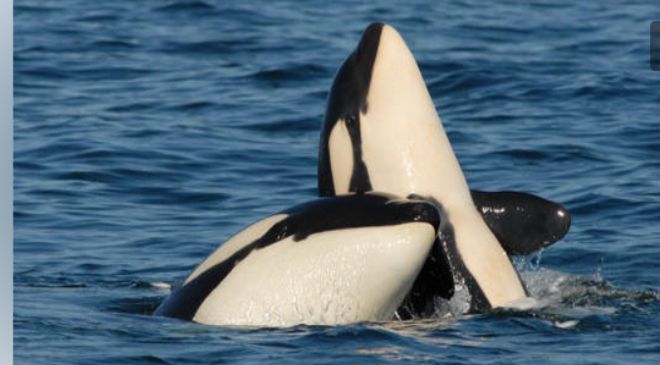- Older orca mothers may protect their sons from bullying well into adulthood.
- Orca males carry fewer bite marks if their moms are alive in their old age, a study found.
- The research may explain why orcas are one of only six species to have menopause.
Also Read– Apple testing platforms to rival OpenAI’s ChatGPT
Killer whale mothers may be protecting their adult sons from bullying and fights — but leave their daughters to fend for themselves, a new study suggests.
The research found that adult male orcas were much less likely to carry the marks of “social injury” — orcas attacking other orcas — if their mothers were still around past their reproductive age.
Scientists suggest that these mothers can help their adult sons navigate potentially dangerous social situations, Charli Grimes, a behavioralist from the University of Exeter and a lead author on the study, told Insider.
Also Read– Elon Musk’s mom wants you to stop encouraging the Musk-Zuck cage fight
It may also explain why orcas are one of six species that undergo menopause.
Older orca females have a very close bond with their sons

Male Southern Resident killer whales prefer to stick with their mothers throughout their life. And it’s easy to understand why.
“There’s just a really strong social bond between the mom and the kid. They spend a lot of time floating at the surface together, rubbing on each other, and swimming in tandem and in synchrony,” Michael Weiss, research director at the Center for Whale Research of Exeter University, previously told Insider.
Also Read– New Google Chromebook X project leak: What is it?

One reason is that these big lumbering beasts may need a little extra help in the fishing department. They are much bigger than the females, which may be a problem when you’re fishing comparatively tiny salmon.”If you’re a male and your post-reproductive mother dies, your mortality skyrockets in the years after that,” said Grimes.
Also Read – 10 Ways You Are Ruining Your Personal Brand
Moms may step in if their sons are in trouble

This new research, from the Universities of Exeter and York in the UK and the Center for Whale Research in Washington, suggests moms could be going even further for their sons.
Scientists scoured photographs to identify tooth rake marks on the whales, scarring left during rough play or fighting.
Also Read– Investor Optimism Improves After Nasdaq Settles Higher
Their findings, published in the journal Current Biology on Thursday, showed sons were 35% less likely to carry these marks if their mothers were still in the pod and past the age of reproduction.
Daughters, on the other hand, had fewer tooth marks altogether, and having their mother around didn’t change anything.
Scientists suspect that once the mothers aren’t concerned with their own calves, they can spend time helping their older sons navigate tricky social situations.
“They will have previous experience of individuals in other pods and knowledge of their behavior, and could therefore lead their sons away from potentially dangerous interactions,” Darren Croft, Professor of behavioral ecology from the University of Exeter and a study author, said in a press release.
“The mothers might also intervene when a fight looks likely,” he said.
Read More:-Invest in Your Future: 7 In-Demand Careers to Watch Out For
The finding could explain why killer whales have menopause
Killer whales are one of only six species — which includes humans and five species of toothed whales — known to have menopause. And these findings may explain why.
By protecting their sons, older females may be increasing the pod’s chance of passing on its genes, while expending fewer resources. Protecting them from roughhousing could mean fewer skin infections passed through the cuts, for instance, per the study.
“From an evolutionary perspective, a mother can pass on her genes indirectly through her son, more effectively than she can through her daughter,” said Grimes.
Read More:-U.S. stocks rally as inflation data cements bets on rate hike pause
“Males have a greater reproductive potential than females in that they have the opportunity to meet with multiple females,” she said. “They may be outside of the social unit, so when they have a calf, the responsibility and the burden of that calf, it actually lies with another social unit,” she said.









































